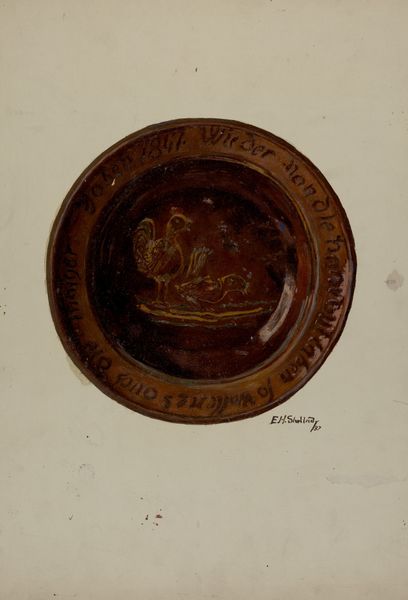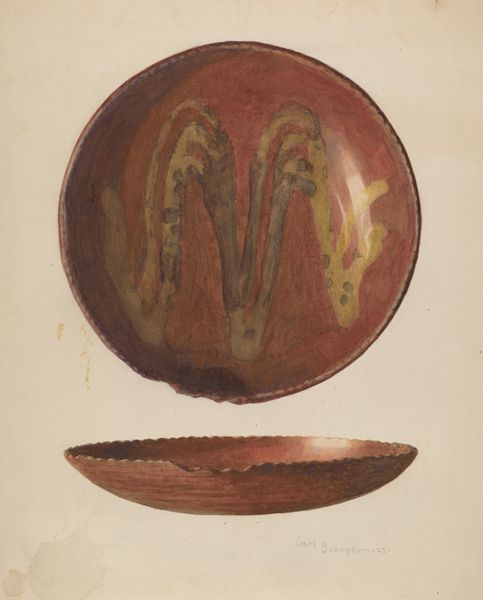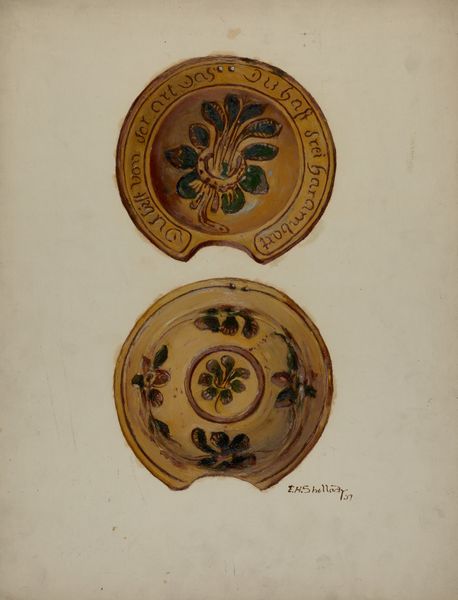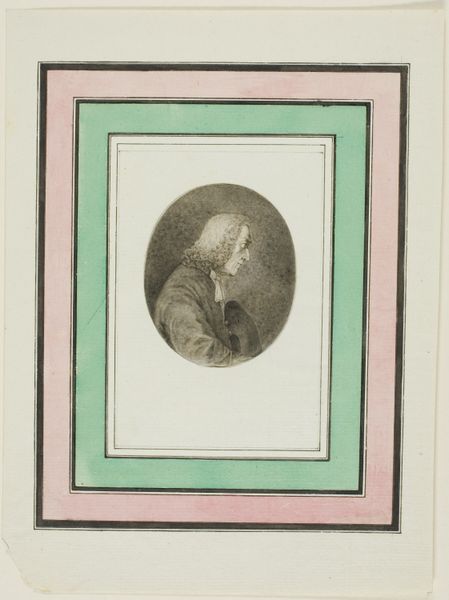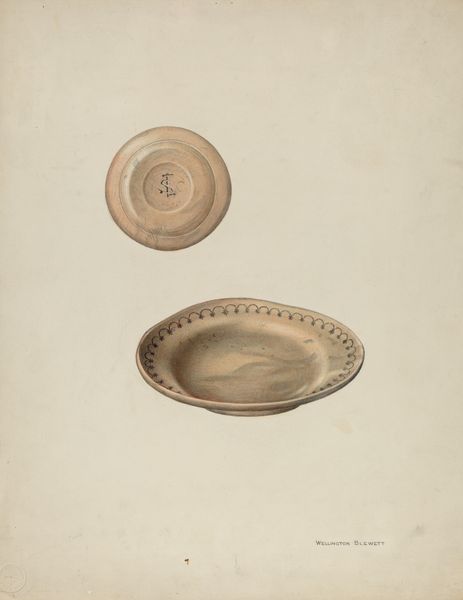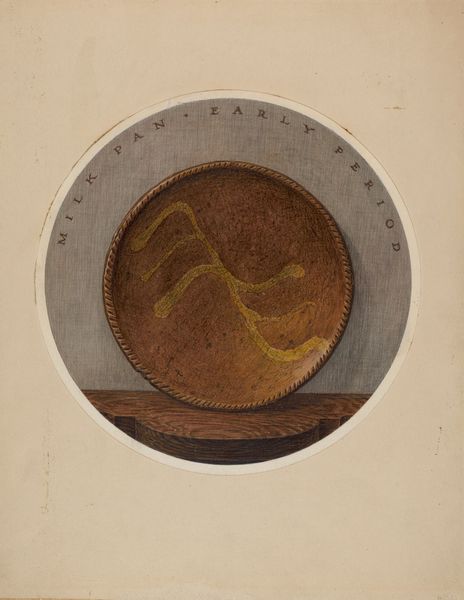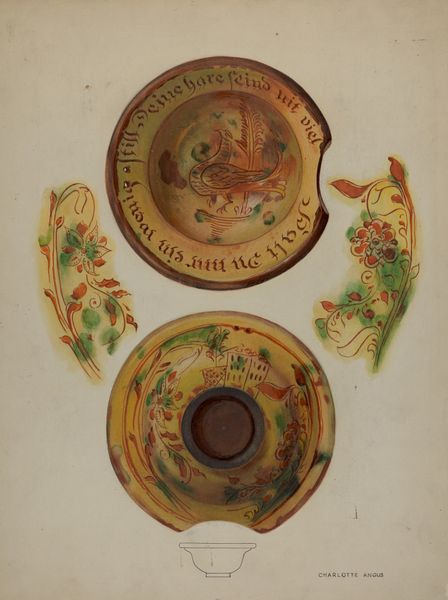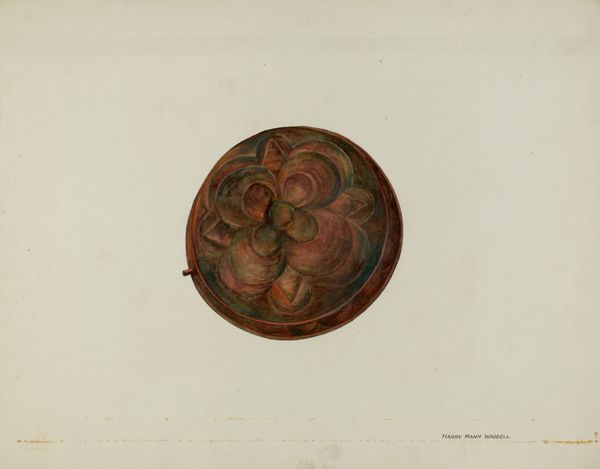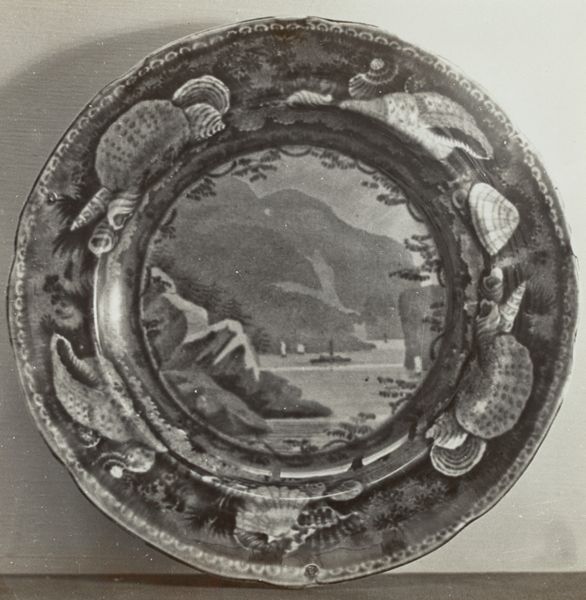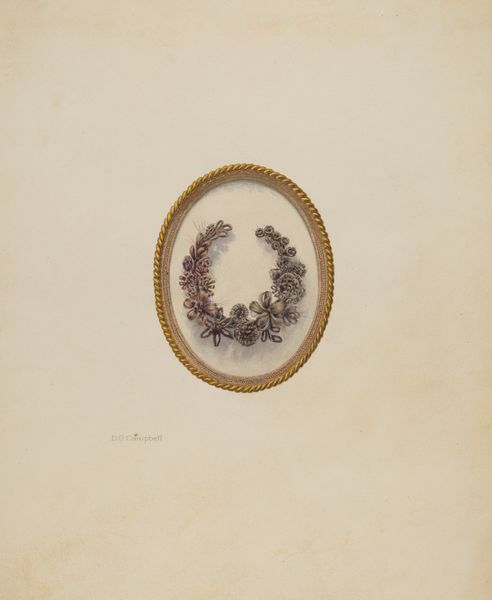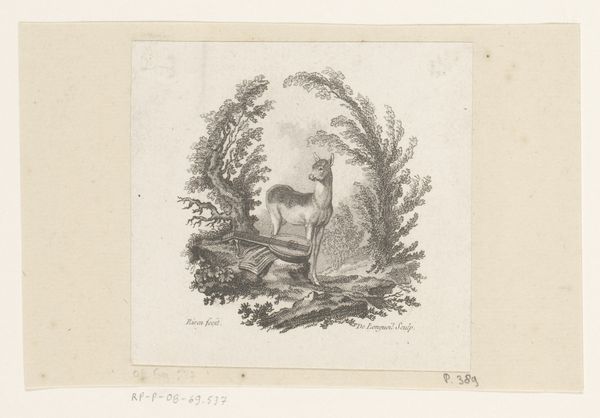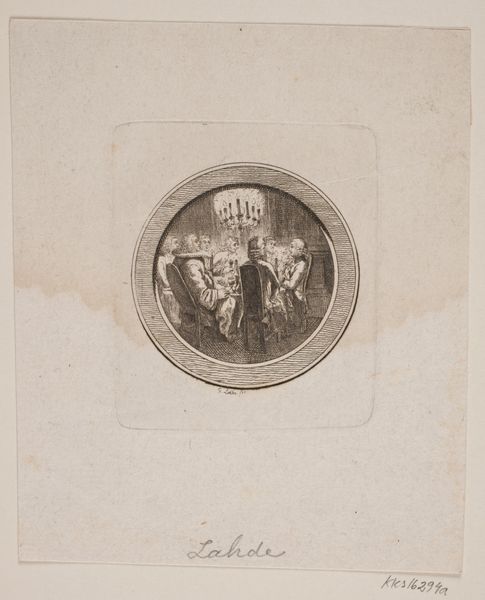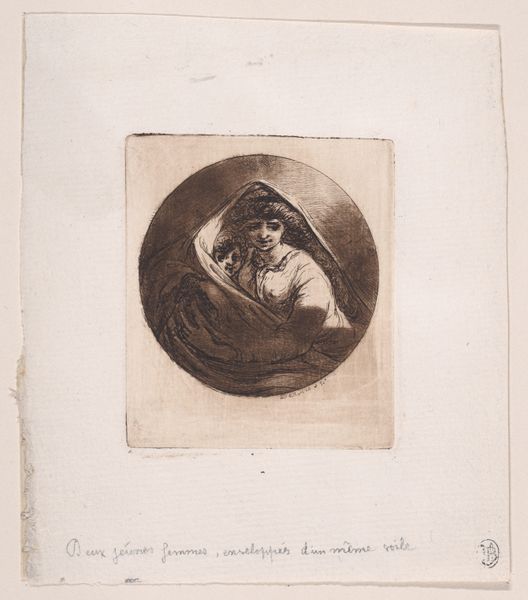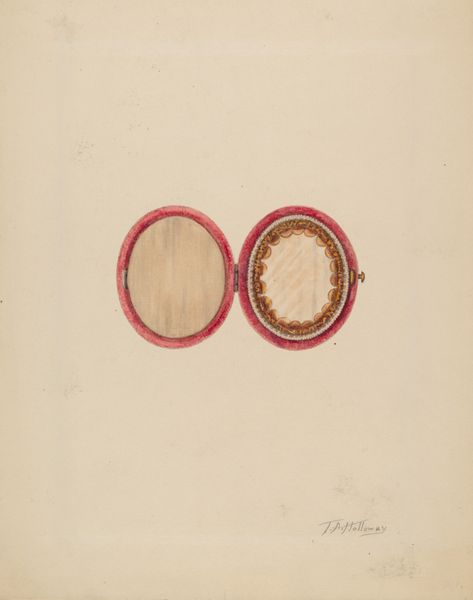
painting, watercolor
#
portrait
#
painting
#
oil painting
#
watercolor
#
romanticism
#
animal portrait
#
watercolor
Dimensions: 4 3/4 x 4 3/4 in. (12.07 x 12.07 cm) (sight, round)10 1/2 x 10 1/2 in. (26.67 x 26.67 cm) (outer frame, round)
Copyright: Public Domain
Curator: The moment I look at it, this piece makes me think about the kind of portraiture where animals, particularly pets, stand in for their owners' desires, fantasies, and, frankly, anxieties. Editor: That's an interesting starting point. The work before us is a watercolor study from 1824. Sir Edwin Landseer made this in preparation for his painting titled "The Cat's Paw." You can find it here at the Minneapolis Institute of Art. What else jumps out? Curator: Well, he's so… melancholy. Landseer captures a human-like weariness in that little face. The monkey looks almost world-weary, doesn’t he? As though he’s already lived a thousand lives full of complex machinations. Editor: Indeed. Consider Landseer’s time—Britain was rapidly expanding its colonial reach, with complex implications for animals. Landseer, through his animal paintings, engages with Victorian-era anxieties about empire, class, and the "natural" order. In art history, depictions of animals aren’t neutral; they encode imperial power. The phrase "cat's paw" also points to how easily the working classes can be manipulated to serve agendas not their own. Curator: Absolutely. I see that simmering critique, especially as you frame it. Still, there's also a surprising gentleness in the execution here. It feels intimate somehow. As an artist, it almost feels like an act of empathy or maybe even love. And that softness can make the work more complex than an explicitly political statement. Editor: That contrast makes it more interesting for sure. On one hand, the tenderness you feel, but on the other the commentary about exploitation through colonial machinations, which you can't easily see, is still relevant. Even these "cute" animals, carefully posed in portraits, participate in that tradition and convey complicated messages. Curator: It seems Landseer knew that better than most. What do you take away from seeing this today? Editor: A potent reminder to unpack visual culture that can often mask systems of oppression, especially the narratives we tell ourselves. It urges us to question, "Whose interests are truly being served here?" Curator: For me, it serves as a tender yet unnerving portrait of an animal spirit caught in a web much bigger than himself—or myself for that matter. A little vulnerable reflection for the ride.
Comments
No comments
Be the first to comment and join the conversation on the ultimate creative platform.
